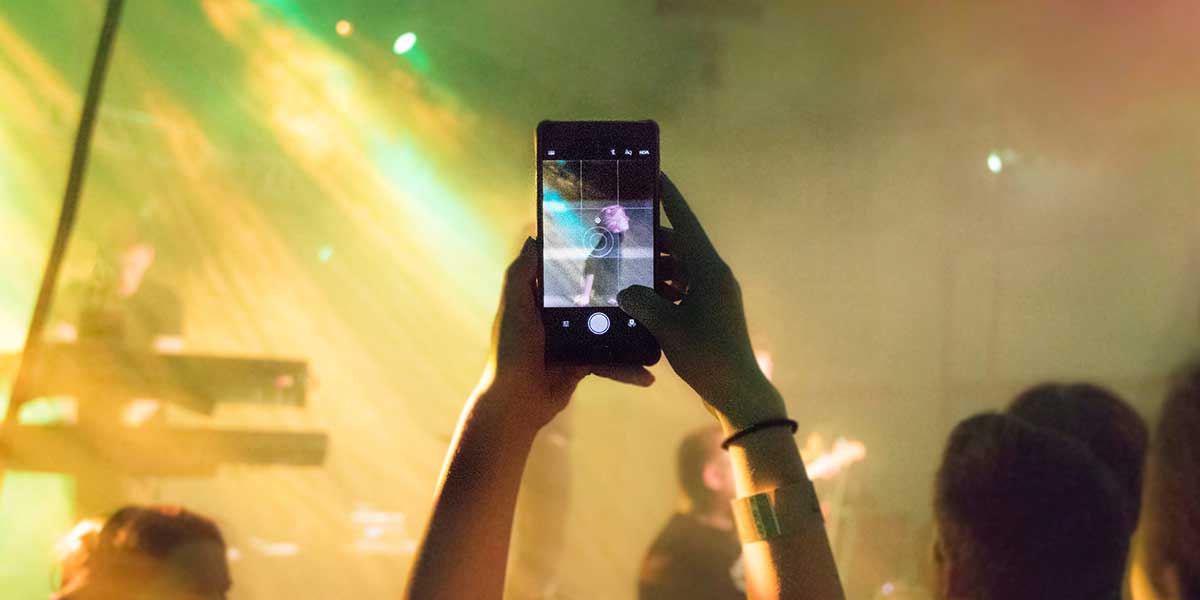As we approach the New Year, look out for the customary flood of posts talking about industry predictions for 2019!
This is my contribution; a list of the hot marketing tactics on my radar for 2019.
Over the past couple of decades and, more significantly, over the past 5 years, we’ve seen incredible evolution in the marketing/advertising landscape. I often joke that Martech and Adtech change so rapidly that what’s hot in marketing today, will be ‘old hat’ by tomorrow.
In other words, keeping an “adapt or die” mentality is key to being a successful marketer.
This truly is an exciting time for us. There’s never a dull moment as we keep discovering new ways to reach our audiences and to stay ahead of the marketing curve!
Here’s my list:
Advanced TV Advertising

Source: https://www.iab.com/news/advanced-tv-targeting-guide/
“The average length of a session with TV is 43% longer than with YouTube, and 240% higher than with Facebook, offering more potential for engagement.” Source: Video Advertising Bureau
TV is not dead. People still watch it, but in a very different way than before. They have many more choices on when, where and how they consume it. You don’t need a TV to watch TV anymore. Tablets, phones and desktops can become TVs via apps like Hulu and Twitch. TV viewing is not limited to scheduled programming any longer. OTT/CTV devices and Smart TVs enable TV sets to stream content via an internet connection.
So what is Advanced TV?
“Advanced TV” is the IAB’s catchall term for all forms of TV not watched through a broadcast, cable or satellite connection on a television. With advanced TV advertising, we can go beyond age and gender targeting and are able to reach individuals based on their device, demographics, time of day/day of week, content and category, location, etc. Advanced targeting opens up purchase behavior (available through the use of first and third-party data).
So, what are some examples of Advanced TV?
OTT/Connected TV
Since OTT (Over the Top) content is delivered over the internet to connected TVs with persistent IP addresses, advertisers can target and serve ads to specific households with similar precision as digital video, resulting in greater relevance and ROI.
Addressable TV
With this type of TV, advertisers can purchase audiences as opposed to the traditional methods of buying based on programming, meaning that brands can target individual households within the broadcast environment of linear TV. This is also known as ‘Programmatic TV’.
This type of TV lets you show different ads to different households watching the same live TV program on the internet or through a set-top box. Imagine one household watching “The Big Bang Theory” and seeing a commercial for Ford while the house next door is also watching “The Big Bang Theory” but sees a commercial for Purina instead. You can target households by their behavioral, demographic or geographic data.

The Opportunity
Advanced TV targeting allows us to eliminate waste by targeting ads to individuals on their big screens rather than using a “spray and pray” approach.
TV is a big opportunity to present relevant and timely messages to people in large format, when they are relaxed, comfortable and in a receptive state of mind to absorb the messages.
I believe one of the reasons many marketers are not investing in this type of advertising yet is lack of familiarity. But that is likely to change in the coming year…
Live Video
“80% of users would rather watch a brand’s live video than read their content marketing posts” Source: https://livestream.com/blog/live-video-statistics-livestream
It’s no secret that video is more engaging than copy or images. It has been proven to drive more engagement – likes, shares, comments – than other visual formats. Live video goes one step further in that it helps to build a community around your brand, it adds authenticity and draws people in more effectively than recorded video.

People love live video because it’s a rare, behind-the-scenes look at honest content from the businesses, brands, and influencers they support. And let’s face it, we’re all intrigued by the idea that a live broadcast is raw and uncensored and that something surprising or unexpected could happen as we watch. We appreciate the courage and openness of the broadcaster and our bond with them becomes stronger.
Marketers are embracing this sentiment as it allows them to make a more meaningful connection with their audience which, in turn, facilitates direct feedback and retention.
According to a study by Livestream and New York Magazine, the most popular live video platforms are Facebook and YouTube.
Making live video an integrated part of your content marketing calendar is a must!
Native Ads
According to Emarketer, native ads make up nearly 60% of display ad spending.
Native ads are ad placements that match the form, function and feel of the content in which they appear. The most common example of these ads are social media ads. Other forms of native advertising such as programmatic native are gaining in popularity because of the high level of engagement that they drive.
They do not immediately ‘stick out like a sore thumb’ on a website as traditional display ads do and are more subtle and therefore more effective at driving views and clicks. I’ve seen great success with this medium and would definitely recommend it as a top of funnel tactic!
Stackadapt is a native-first demand side platform (DSP) that streamlines the process of placing native ads.
Machine-learning powered solutions
Machine-learning, in a nutshell, is the ability for software to improve without needing to be explicitly programmed. It’s being implemented by many businesses in many applications as a way to make sense of the enormous amount of available data. Machine-learning is the epitomy of working smarter and not harder by using data and computing to streamline the marketing effort.

Source: MIT Technology Review Custom/Google Cloud, “ML: The New Proving ground for Competitive Advantage”
There are many ways that machine-learning has been infused into marketing machines to enhance performance and relevance.
One example is Adobe Sensei which is the machine-learning engine behind Adobe’s suite of products. Adobe Experience Manager uses Sensei to facilitate the delivery of personalized marketing experiences in real time, learning what customers want, identifying significant events, and making recommendations to reach the right customer at the right time.
Another example is Google’s smart display campaigns. These allow ads to be displayed in almost all formats across the entire Google Display Network meaning that messaging touches prospects at various stages in their journey from awareness to consideration to ‘ready to pull the trigger’ and purchase. To do this, Google connects three optimization technologies including automated bidding, automated targeting, and automated ad creation. By using targeting, these ads appear where they will get the most significant response for the most value.
Chatbots
Chatbots fall under the umbrella of machine-learning powered solutions, but deserve a section of their own, I think, because of their recent proliferation in so many business applications.
Nordstrom, Pizza Hut and Uber are examples of major brands that have tapped into their customer base by using chatbots.
Studies have shown that customers and prospects prefer to interact with brands through chat. Chatbots automate the process but are sophisticated enough to engage in meaningful and relevant conversations with humans without ever sounding like a robot.
Chatbots respond intelligently to customer service issues, product questions, booking requests, in real-time. Not only does this provide a high level of service to the demanding, always-on customer of today, but it also saves businesses time and money.
In addition, based on their interactions, chatbots can provide insights and data about how to optimize the sales and retention process.
Learn more about how to implement a chatbot for your business.
Voice Search

This one has been talked about ad infinitum in a multitude of “predictions for next year” blog posts. I had to include it, it’s just that important!
“By 2020, 50% of all searches will be carried out via voice”… or is it 30%?
These conflicting numbers have been bandied about by so many sources that it’s unclear who the originator was and what the actual prediction is. Whether either of these stats will turn out to be a reality is not as important as the fact that the use of smart speakers, mobile device assistants and in-car search are all heavily on the rise.
To stay ahead of the curve, it’s clear that our SEO strategy needs to follow suit by prioritizing natural language, long-tail and ‘near me’ search terms.
We’re still in a transitional period with voice search, but as conscientious marketers, we should be skating to where the puck is going!
Blockchain

If you’re not familiar with blockchain technology, a brief explanation can be found on IAB’s website.
There are several realistic use cases for blockchain in the marketing and advertising space. One of the most obvious is providing greater transparency and “truer metrics” for programmatic and advanced TV buys. In the same vein, it can also help to eliminate ad fraud, thereby safeguarding our ad investments.
Another use case is loyalty programs. Companies such as major airlines, coffee brands and sports brands are already using blockchain-based loyalty systems to keep an immutable record of customer purchases and reward them based on the data held there.
Blockchain can and will also play a major role in empowering consumers with a choice on who they share their personal data with and what they get in return for doing so.
Although blockchain is still in its early stages and needs to evolve as a technology, it should be on our radar for the coming year.
I’ll be on the lookout for media partners that are embracing blockchain technology and transacting through it!
Privacy
With GDPR now in place, and the notorious scandals that Facebook has been dragged through over the past year, it is obvious that privacy is a top concern for consumers and governments.
As marketers, it’s our responsibility to embrace this zeitgeist and become more sensitive to people’s personal data, how we use it, the necessity to be transparent about how we use it and to give consumers a choice.
We already discussed how blockchain can contribute to this end, but we need to be acutely aware that the demand for regulations and privacy is only going to bet stronger and more widespread.
Bring it on, 2019!
So, there you have it: my two cents on what I think dialed-in marketers will have on the brain in the coming year. If you’re obsessing about anything not on my list, I’d love to hear from you!






